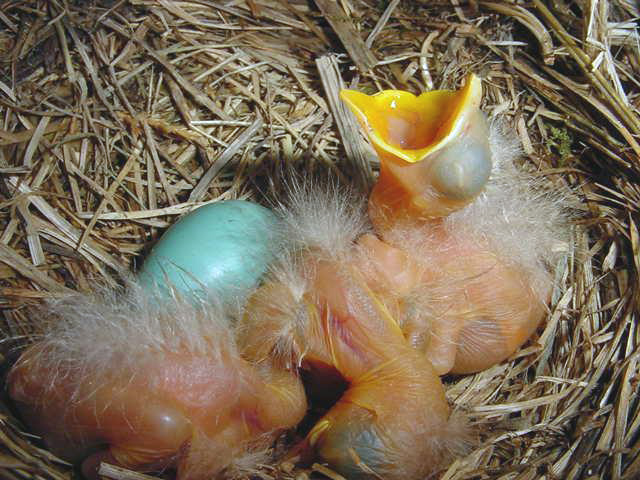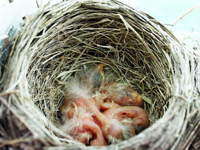|
|
Robin Migration News: May 5, 2015
By Jane Duden |
Report
Your Sightings |
 |
|
From Florida to Alaska and California to Canada, robins are home. Now comes the serious business of raising new little robins. |

Hungry Babies by Dorothy Edgington
|
| Highlights: Home Sweet Home
|
It's time to celebrate
how far the robins have come in just over three months of our tracking their migration! Robins have:
- expanded across the North American continent up to Alaska.
- changed their behavior from social flocking to territorial
nesting.
- changed their daily patterns of movement from nomadic
winter wandering to summer nesting in a localized territory, one-half to a few acres in size.
- changed their diet from leftover fruit to the bountiful
live worms and insects of North America's spring and
summer seasons.
Well done, feathered friends! And well done, citizen scientists! Many thanks for your observations and photos that helped us track spring's journey north.
|

Wayne Kryduba
Feeding the Family

Carolyn Mueller
Welcome, Babies!
|
| Explore: What Do Baby Robins Need to Learn? |
Baby robins are ready to leave the nest when they are about 13 days old. They have a lot to learn. Summer is school time for fledglings!
|
 |
| Maps: Report Your Sightings |
|
| |
| Evaluation: Share your thoughts! |
| Please take a few minutes to complete our Annual Evaluation. With your help, we can document Journey North's reach, impact and value. Thank you!
|
 |
|
|
|













